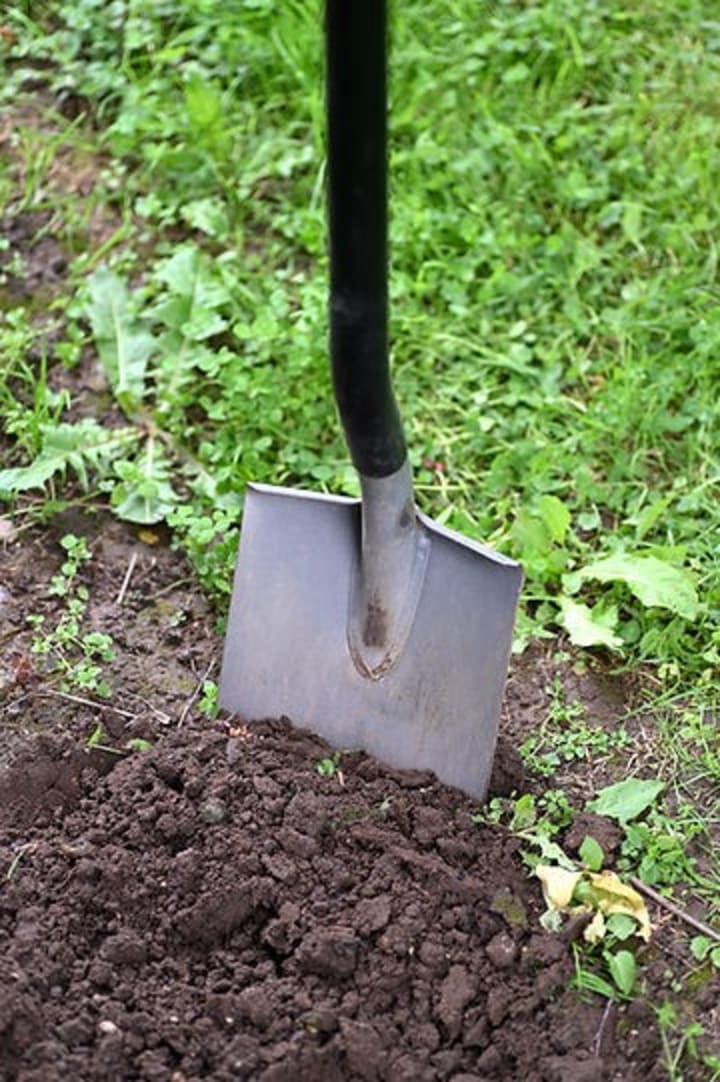October Garden Jobs To Keep You Busy!
It’s still a lovely season for spending time in your garden!

With the weather having noticeably cooled, and the clocks going back at the end of the month we're moving quickly towards winter! Frosts become a possibility depending where you are but it's still a lovely season for spending time in your garden!
Sow Green Manure
No, we don't mean manure in the traditional sense (not sure where you'd find it in a green colour either!). We mean sowing fast-growing, nutrient rich crops that grow well sown onto bare soil.
Leave for 2 or 3 months and then turn and dig into the soil. They provide the soil with a nutrient boost, the root systems improve soil structure and the leaves provide ground cover preventing more tenacious/invasive weeds.
Try the following plants at this time of year:

Grazing rye (Secale cereale): This annual crop is good for soil structure and overwinters well; sow in August to November and dig in the following spring.
Mustard (Sinapis alba): This annual crop from the brassica family should not be followed by other brassicas, as it could encourage build up of the disease clubroot; sow in March to September and leave for two or three months before digging in.
Phacelia (Phacelia tanacetifolia): Later sowings of this annual crop may overwinter in mild areas, but it is generally best sown in April to August and dug in after two or three months; its flowers are very pretty.
Trefoil (Medicago lupulina): This legume can be annual or biennial and overwinters well but needs light, dry alkaline soil; it can be dug in after two or three months or left for one or two years after sowing; sow in March to August.
Winter field bean (Vicia faba): This annual legume can be left for two or three months after sowing (up to flowering) and is good for heavy soils; sow in September to November.
Winter tares (Vicia sativa): This annual legume is hardy and overwinters well, even in heavy soils; sow either in March to August and leave for two or three months before digging in, or sow in July to September for overwintering.
Dig The Soil (Or Don't!)
If you have an allotment or vegetable patch, or are looking at planting a new bed or border, now is the perfect time to start preparing the soil. Digging allows frosts to penetrate and break down large clods of soil helping with nutrient and water dispersion whilst exposing soil-borne pests to birds and other predators.
There are three main methods of digging, and the no-dig method.
No Dig:
No dig methods are familiar to vegetable growers but can be perfect for anyone looking for a low-intensity way of installing a new bed or border. Rather than turning the ground on an annual basis, no-dig gardeners will start by covering the surface with 10=15cm of garden compost or fully-rotted manure. Seeds are sown directly on to this, or plants dug in individually, leaving the majority of the soil underneath undisturbed. This allows the various life-cycles going on beneath the soil to continue and provides a tough, secure bed for plants to root into.
Simple Digging:
This method is perfect for when you're working around established plants. Just pick up and turn over large clods of soil which don't have anything growing in them to help break up the soil releasing and dispersing nutrients.

Single Digging
Dig a trench to one 'spits' depth (one spade blade) and transport the soil in a wheelbarrow to the other end of the area to be cultivated. Dig another parallel trench to the first and drop the soil from the first trench into the new trench. Repeat until you reach the end of the plot, and place the last load of soil into the first trench.
Double Digging
The same method as single digging, but to the depth of two 'spits'. Hard work but perfect for where the soil hasn't be cultivated in some time.
Project: Lay a Lawn
The fastest and most successful way of laying a lawn is to lay rolls of turf in the spring or autumn. The weather will be cooler and damper than other times of the year allowing roots to establish themselves quickly and effectively.
You will need: Turf, Spade, Fork, Rake, Knife, Boards, Half-moon tool, hosepipe, topsoil, broom and sprinkler.
Method:
- Prepare the ground by skimming off the old grass and removing large weeds and stones. Roughly level with the rake and walk up and down to recompress. Continue until the texture is even.
- Lay your first rolls of turf against a straight edge, carefully unrolling. Butt every piece firmly up against the last, and lay in a brickwork pattern. Tamp down with the rake head to ensure good contact with the soil.
- Trim the edges using the half-moon tool
- Finish by brushing a sandy top-soil mix into the cracks with a broom and water well for several weeks.
Plant a Tree!
Autumn is the perfect time for tree planting. The soil is still warm from the summer months and damp from recent rainfall allowing plants for form a strong root network quickly.
Container Grown Trees: Dig a hole that's twice the diameter of the container and the same depth. Spike the sides and the bottom with a fork to allow the roots to work their way through the soil. Place the tree in the centre and backfill with soil and compost, compressing as you go to remove air bubbles.
Bare Root Trees: Bare root tree specimens need to be planted to the same depth as they were previously planted. There should be a mark (tide mark) against the trunk of the tree to show where the soil level reached. Dig a hole twice the width of the root base, and a depth to allow your tide mark to sit at ground level. You can check this by laying a straight stick or bamboo over the hole and making sure it's at the same level as your tide mark.
Staking Trees: Trees up to 1m in height won't need staking, whilst those taller will need supporting. Use vertically set stakes for bare root trees and 45 degree set stakes for container grown ones and secure with buckle ties. Stakes can be removed after about 18 months once the tree has rooted and is well anchored.
Make a Home For Wildlife:
Turn your garden space into a small scale nature reserve by creating hibernation habitats and daytime protection for animals and insects.
Create a log-pile in your garden by loosely arranging old branches in a shady location. These provide brilliant shelter for Frogs, Beetles, Toads and Hedgehogs, many of which will eat your garden pests!
If you want to mount a bug/bee/insect hotel, mount facing slightly downwards so they don't fill with water, and try and place facing north, so any hibernating insects aren't awoken too early, before food is readily available.
Install Training Wires On a Fence
How To:
- Mark positions for each horizontal wire at either end of the fence, and drill two holes.
- Push an eye bolt through each hole and secure loosely with its nut.
- Thread the wire through the first eye, then bend it back, leaving a small amount of wire that can be twisted to hold it in place.
- Unwind the wire across to the second eye bolt and cut it with pliers, leaving about 10cm of excess. Thread through the second eye then take up the slack by pulling the wire and securing it by twisting.
- Use an adjustable spanner to tighten both bolts to pull the wires tight. Don't overdo or you'll put too much strain on the fence.
- Repeat for the other wires
Landscaping Idea: Build a Pond
A pond can be an attractive feature that can suit any garden with the right adaptations. Ponds tend to look best with long sweeping lines rather than straight edges, but they really can be any shape. The centre needs to be roughly 60–100cm deep, with one side sloping gently for wildlife access (and escape). The opposing side should be made to have shelves for potted plants.
- Mark out the shape of the pond with sand.
- Excavate
- Form the planting shelf 15cm deep and 24cm wide
- Dig out the rest of the pond
- Remove stones from the bottom
- Spread soft sand over the flat surfaces
- Fit flexible pond liner
- Fill with water and plant in spring.
Planting Ideas:
Grow Climbers! Climbing Roses, Honeysuckles, Trumpet Vine, Clematis and Potato Vine all like the sun whereas Schizophragma and Ivy do well in shaded areas. Some climbers are self-clinging, yet the majority will need support as they grow. - Ensure you plant clematis deeply to avoid Clematis Wilt
Fruit and Vegetables to get started:
- Garlic
- Broad Beans
- Blueberries
- Blackberries
For more information, visit www.belgarden.co.uk
October is the treasurer of the year,
And all the months pay bounty to her store;
The fields and orchards still their tribute bear,
And fill her brimming coffers more and more.
Paul Laurence Dunbar
About the Creator
Jordan Catto
Late Twenties Lefty Gardener - Writing about the planet, plants and other stuff






Comments
There are no comments for this story
Be the first to respond and start the conversation.